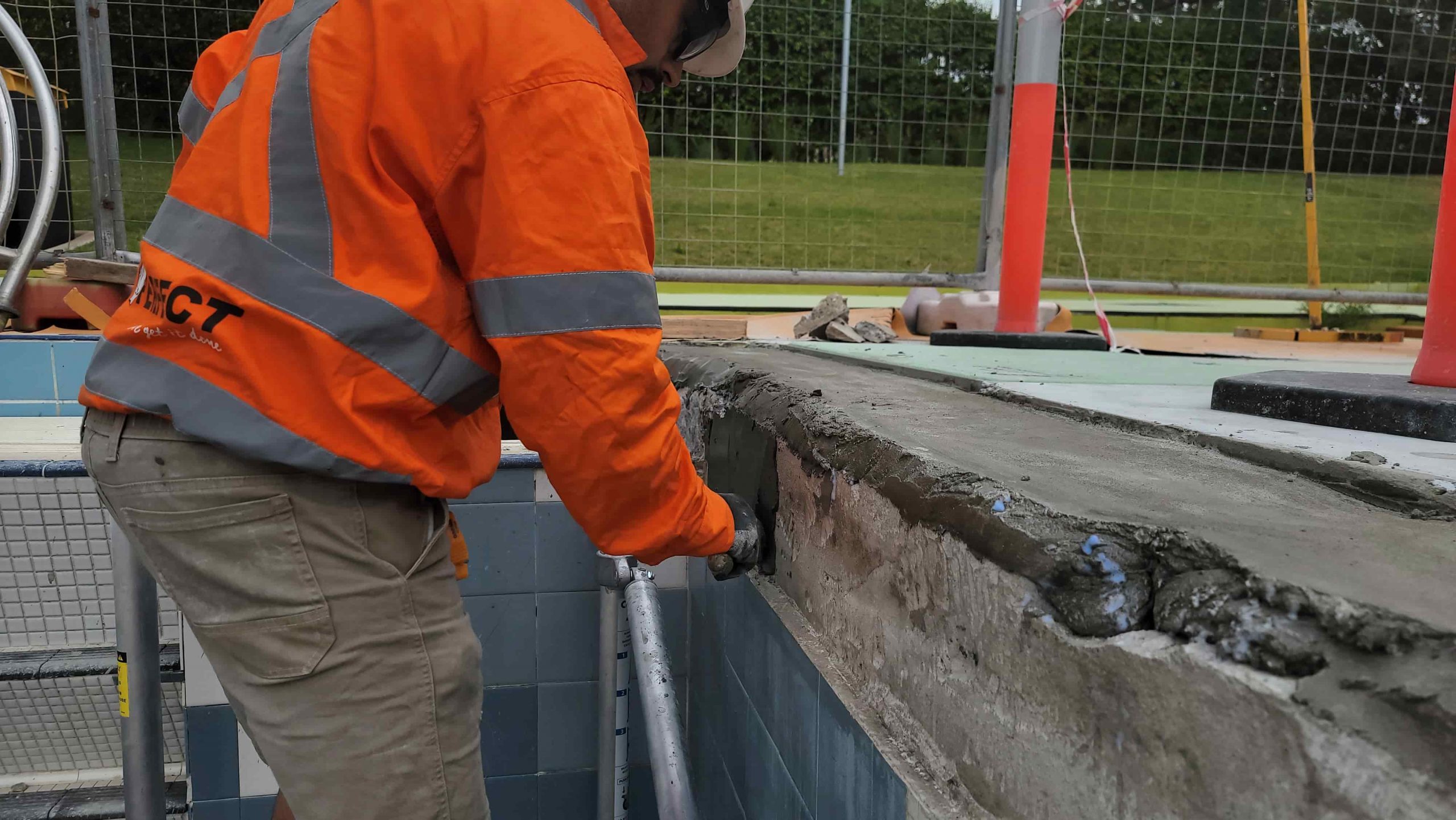By Daniel Green
Concrete Cancer. Two words inject fear into the heart of any construction professional. Fear not, not every case is terminal. We’re about to detail how to remedy things before they take hold. Read on.
What Is Concrete Cancer?
The exact definition is:
Concrete Cancer is an Alkali-Silica Reaction [ASR] as a result of a hygroscopic catalyst.
Even we had to look that up. For lay people like us, it means that a liquid such as water has made its way inside the slab and caused a reaction between the alkaline cement paste and the silica found in many common aggregates like sand. Oftentimes, corroded steel reinforcement further aggravates this action, which has also had its corrosive process begun by water.
The by-product of these reactions are the same as its symptoms – physical deterioration of the slab: cracking, spalling, scaling, and crumbling. There are also secondary signs like leaks, expanding walls and joints, bubbling render, cracking tiles, and rust stains. Because concrete is so brittle [its strength lies in its compressive nature] it has difficulty with any kind of flexion. So when swelling occurs from the Alkali-Silica Reaction the slab just cannot cope and it slowly starts to crack.
This is concrete cancer.
Can I Repair Concrete Cancer Myself?
The short answer is that it depends. There are many factors that determine the salvageability of cancerous concrete. Some qualifying questions are:
- What type of structure needs repairing? Is it foundational, a driveway, a balcony, purely aesthetic?
- What is the structure used for? Is it inhabited?
- How old is the structure?
- How close is the structure to saline water and how much exposure does it get to salt air?
- What is the lay of the land around it?
- How far down is the water table?
- What has caused cancer?
- How long has the cancer been apparent?
- What are your plans for the structure?
- Are there any constrictions to certain works, ie. council regulations, heritage concerns, hazmat disturbance, the structure’s physical location, and orientation in situ?
Making proper repairs that ensure cancer won’t return requires a detailed site assessment by a repairer well versed in concrete cancer. Concrete is such a broad industry with many professionals that even the best concreters don’t necessarily know the best concrete repairs.
There is also a threshold that determines if you can carry out your own concrete repairs: The owner can make any repair that doesn’t affect compliance and doesn’t exceed $20,000. Anything over that must be done by professionals.
What Repair Options Are There?
There are several ways for concrete cancer repair. Each repair depends entirely on the aforementioned questions and a detailed site assessment. However, we can cover an overview of the methods. Let’s begin with the least invasive and work our way up from there.
Electrochemical Treatment
Used primarily in seaside/portside locations where salt-laden air is prevalent and no major structural damage is present and the cancer is a result of corroding steel reinforcement. It involves the installation of a sacrificial anode. This is whereby a more easily corroded metal sacrifices itself by corroding before the steel reinforcement does. Note that this will not repair the aesthetics of the structure and the anode will need replacing periodically.
Polymer Treatment
Used where no major structural damage is present, the cancer is a result of corroding steel reinforcement and demolition – partial or otherwise – is impossible. Mechanical means remove the affected area, usually by concrete saw and/or jackhammer. It’s vital to reach a good clean base of non-cancerous concrete. There is removal, replacement, or repairment for the offending reinforcement. If repaired it must be ground back to a bright finish and coated with a zinc-rich primer. Again, a good clean base is crucial or cancer will return. A polymer-modified concrete resurfacer like Akona® is used in place of boxing and pouring more concrete.
Concrete Replacement
As the name suggests this is a full replacement of damaged concrete. Due to the generally invasive nature of this treatment, it is not acceptable to use concrete replacement in every circumstance. However, It can be used in more situations than you would traditionally think. Some structural members can be repaired or replaced with strategic propping and bracing. Like the above repair, any steel reinforcement that is exposed to the atmosphere needs to be free of surface corrosion like rust. It needs to be ‘bright’ in nature and coated with a zinc-rich primer. The surrounding concrete also needs to be corrosion-free.
In both the polymer and replacement methods, a waterproofing membrane should be installed where possible/practicable. This is a physical barrier, often plastic or composite, that holds back water and moisture during reconstruction as well as during the new concrete’s service life.
In Conclusion?
Concrete professionals come in many forms: concreters, finishers, patchers, steel fixers, formworkers, cutters, and remediation experts. It’s this latter trade that has the most expertise on how to best remedy your concrete cancer. Concrete remediation is an entire industry that focuses on the repair of concrete issues and ranges from concrete cancer to stress cracking to underpinning and beyond.
There are two concrete remediation experts we know of:
Perfect Concrete Care and Perfect Remediation.
For more information on our services, take a look at our webpage or request a free quote.
contact us today
